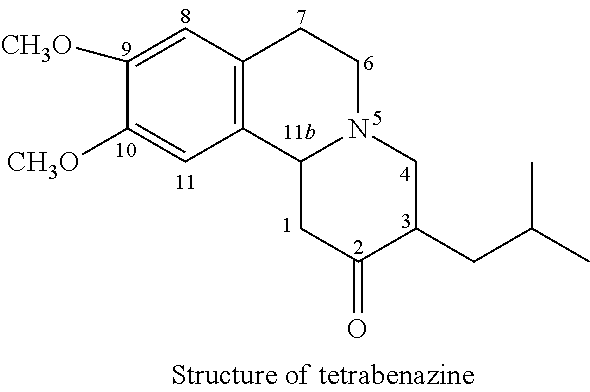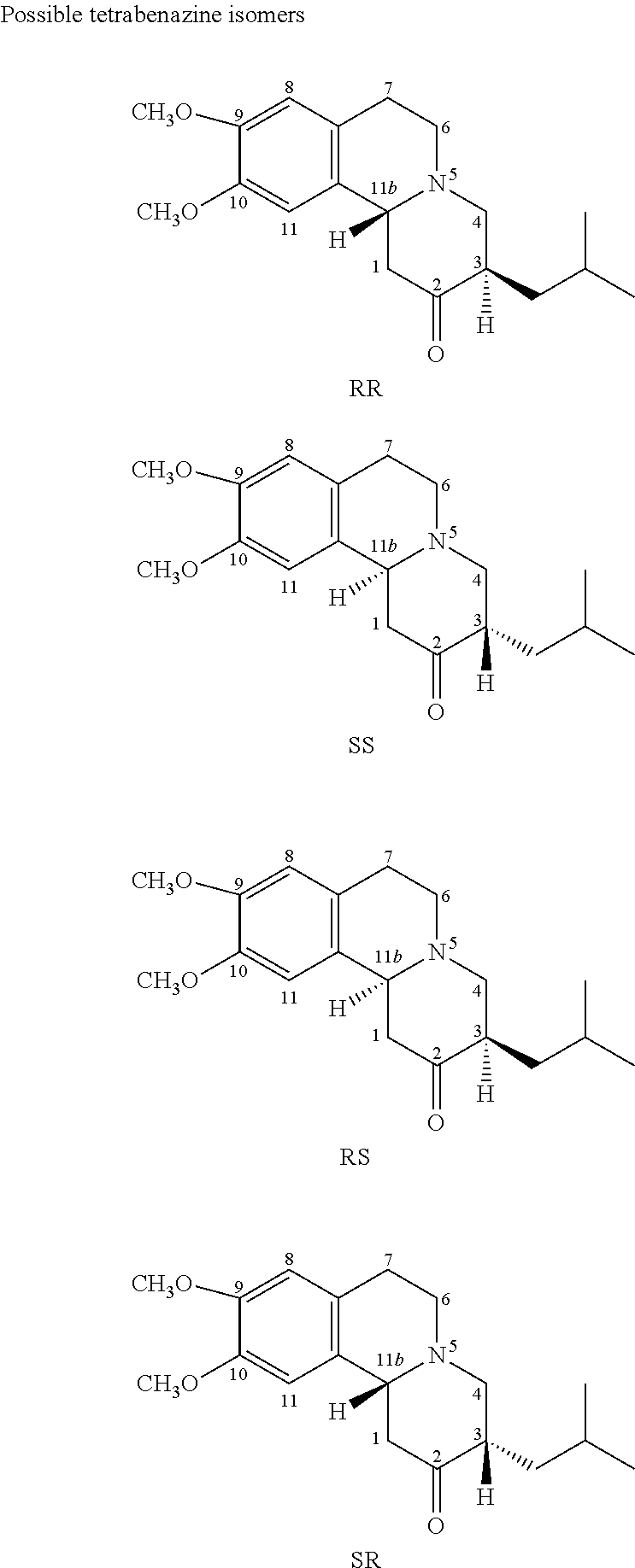Dihydrotetrabenazine for the treatment of anxiety and psychoses
- Summary
- Abstract
- Description
- Claims
- Application Information
AI Technical Summary
Benefits of technology
Problems solved by technology
Method used
Image
Examples
example 1
[0210]Receptor Protein Binding Studies
[0211]The four 3,11b trans-dihydrotetrabenazine isomers (+)-α, (−)-α, (+)-β and (−)-β were subjected to specific binding assays to test their ability to bind to the receptors and transporter proteins described below. The results are set out in Table 1
TABLE 1Percentage Inhibition by Solutions of Dihydrotetrabenazineisomers of Specific Binding at Receptor Proteins(−)-(−)-(+)-(+)-BetaAlphaBetaAlphaRECEPTORCONC% Inhibitionalpha 1A (h) (antagonist radioligand)1.0E−06211271.0E−057563312alpha 1B (h) (antagonist radioligand)1.0E−061093−41.0E−056014123alpha 1D (h) (antagonist radioligand)1.0E−06241318151.0E−05732520−10alpha 2A (h) (antagonist radioligand)1.0E−066330−151.0E−059565117alpha 2B (h) (antagonist radioligand)1.0E−066−22−19−171.0E−05578−1−11alpha 2C (h) (antagonist radioligand)1.0E−067017−741.0E−059569125D1 (h) (antagonist radioligand)1.0E−06365001.0E−0588458−2D2S (h) (antagonist radioligand)1.0E−065622−8−11.0E−05927377D3 (h) (antagonist radioli...
PUM
| Property | Measurement | Unit |
|---|---|---|
| Angle | aaaaa | aaaaa |
| Inhibition | aaaaa | aaaaa |
| Inhibition | aaaaa | aaaaa |
Abstract
Description
Claims
Application Information
 Login to View More
Login to View More - R&D
- Intellectual Property
- Life Sciences
- Materials
- Tech Scout
- Unparalleled Data Quality
- Higher Quality Content
- 60% Fewer Hallucinations
Browse by: Latest US Patents, China's latest patents, Technical Efficacy Thesaurus, Application Domain, Technology Topic, Popular Technical Reports.
© 2025 PatSnap. All rights reserved.Legal|Privacy policy|Modern Slavery Act Transparency Statement|Sitemap|About US| Contact US: help@patsnap.com



